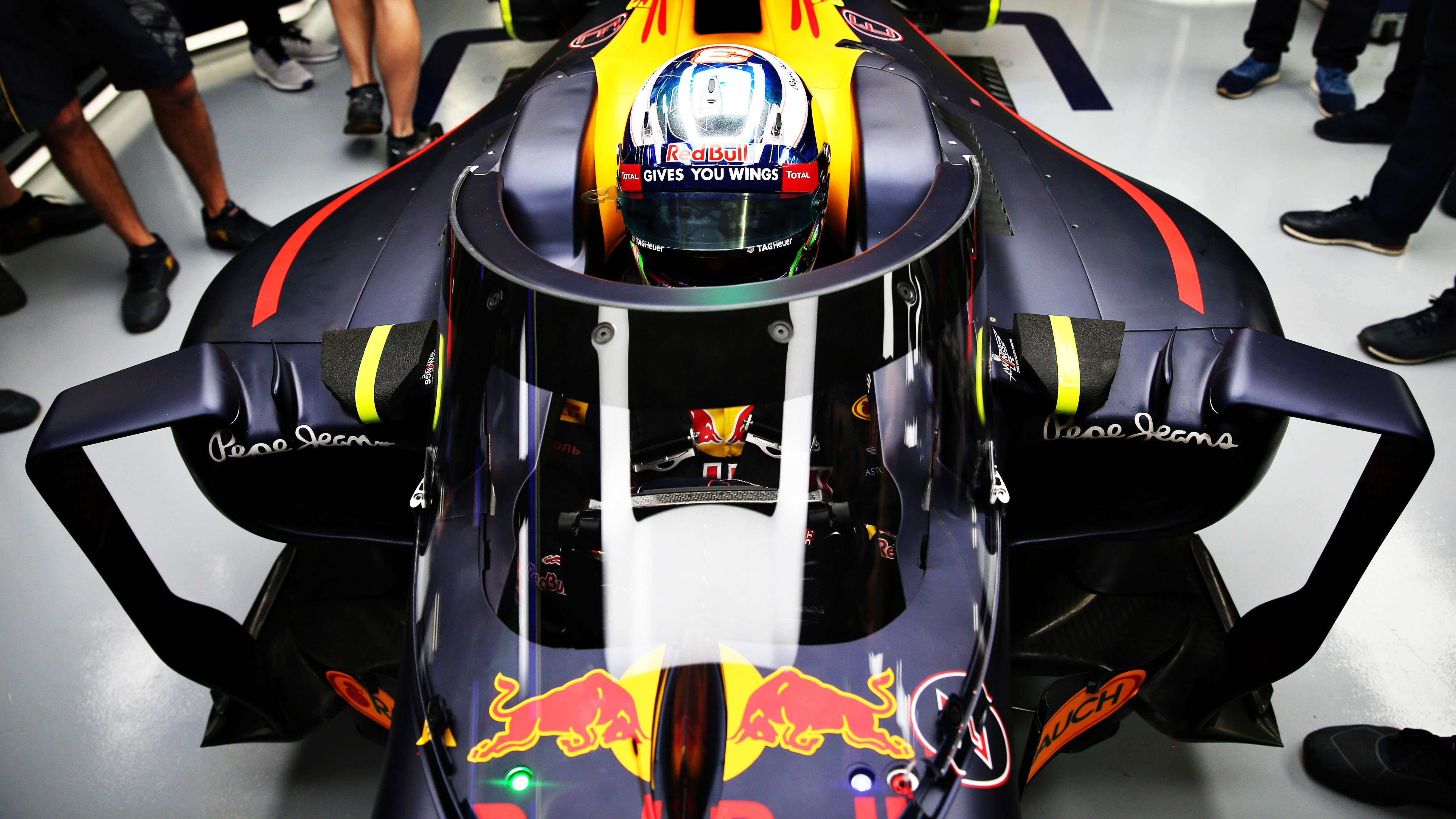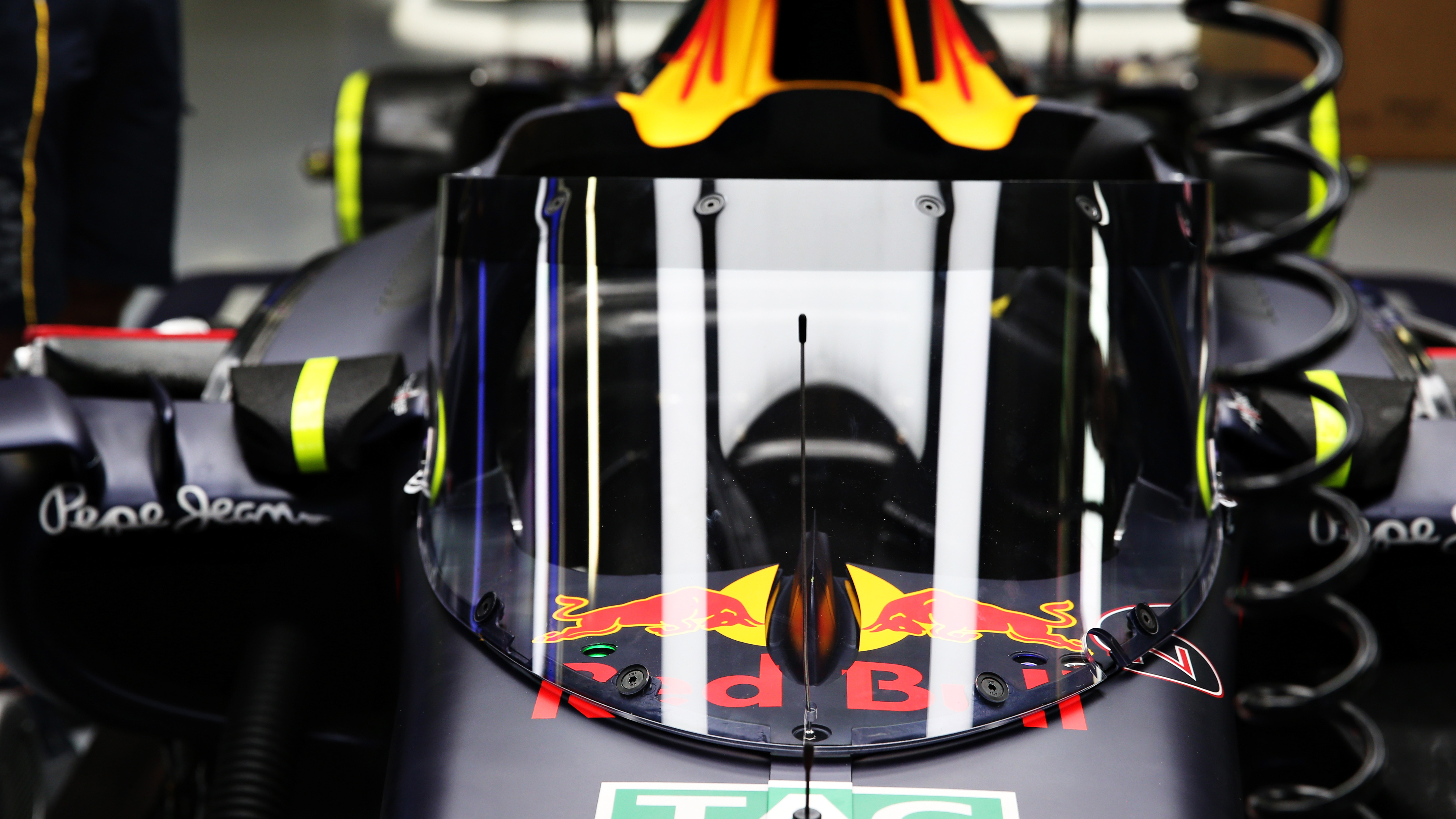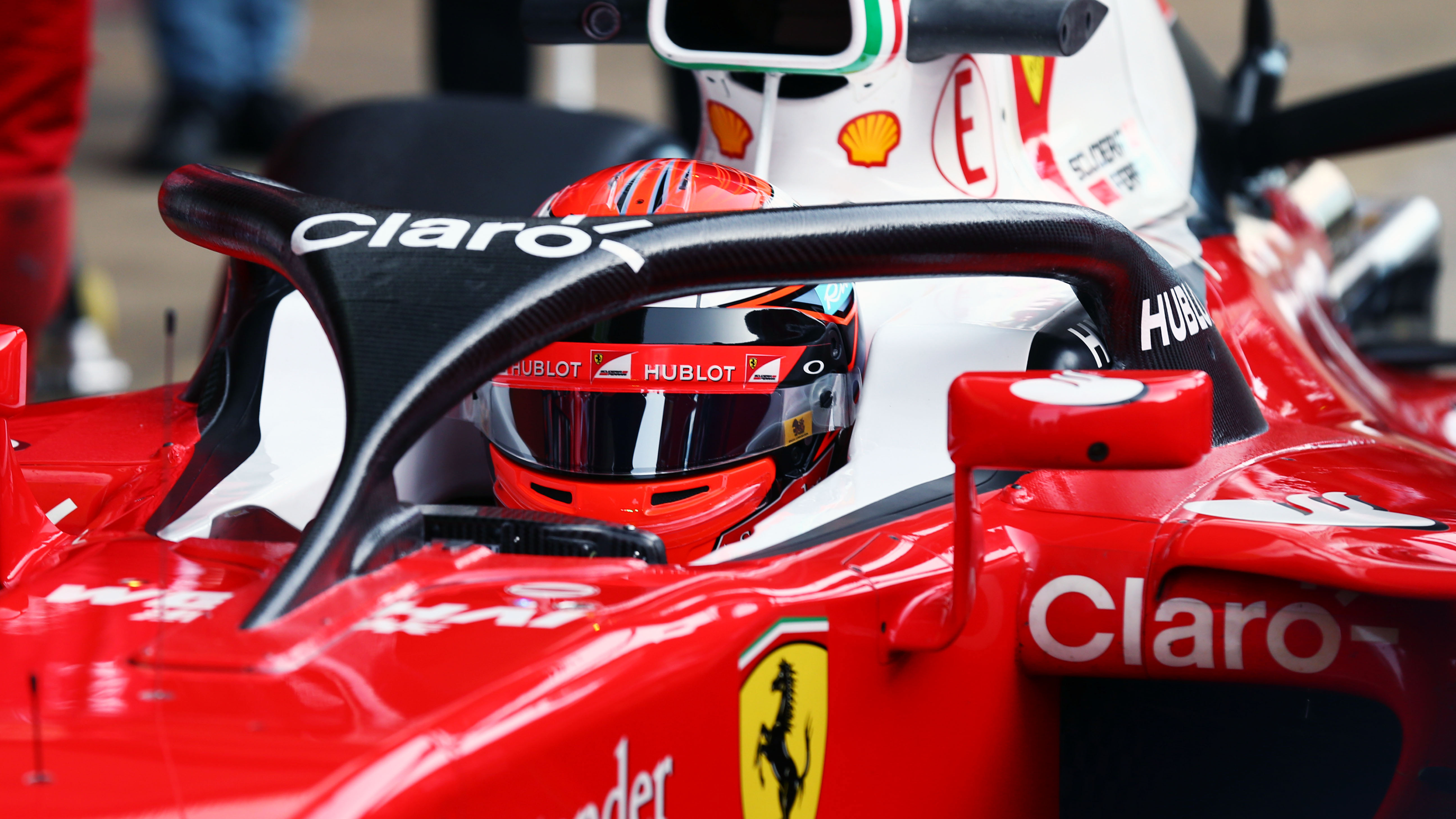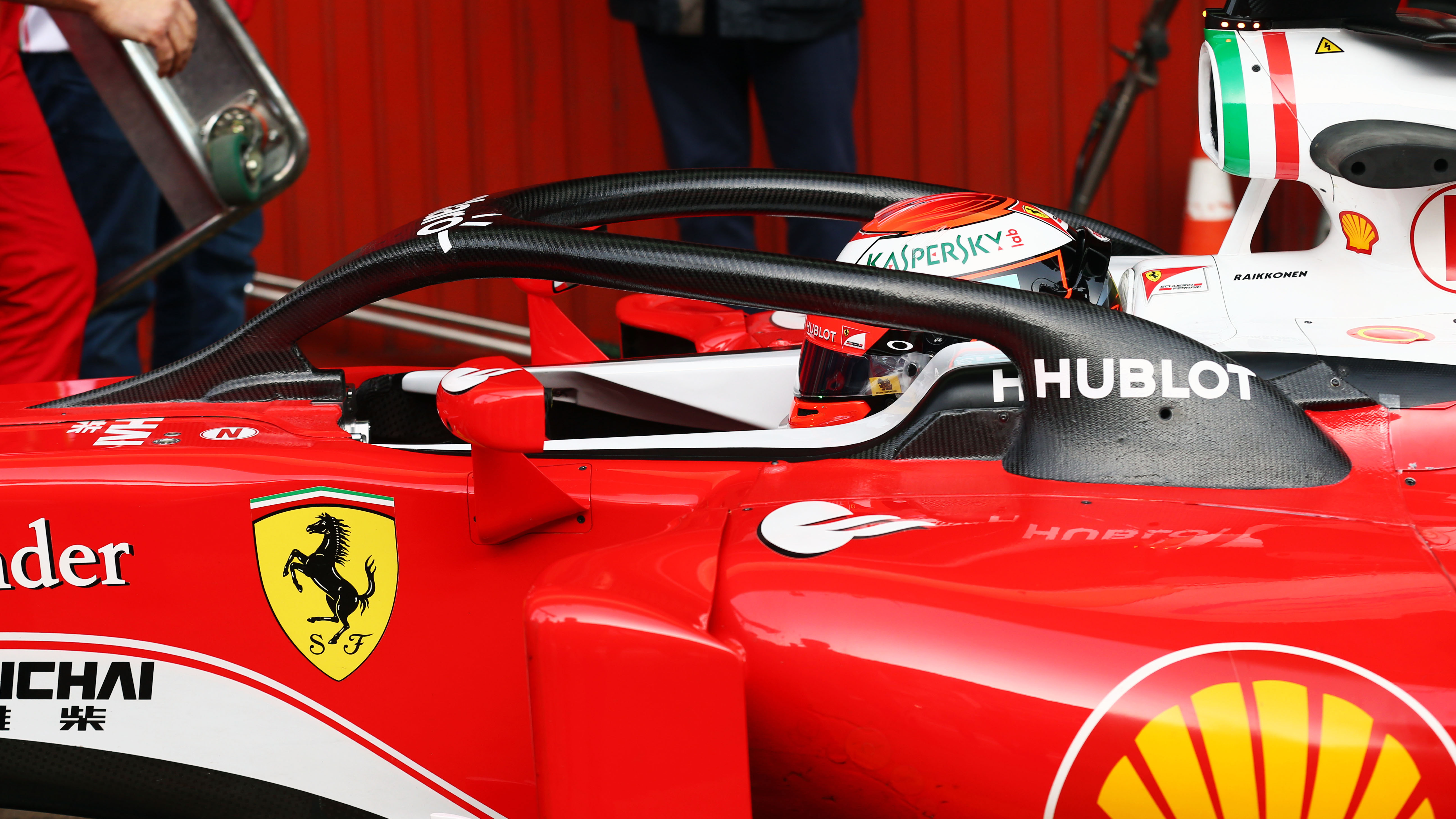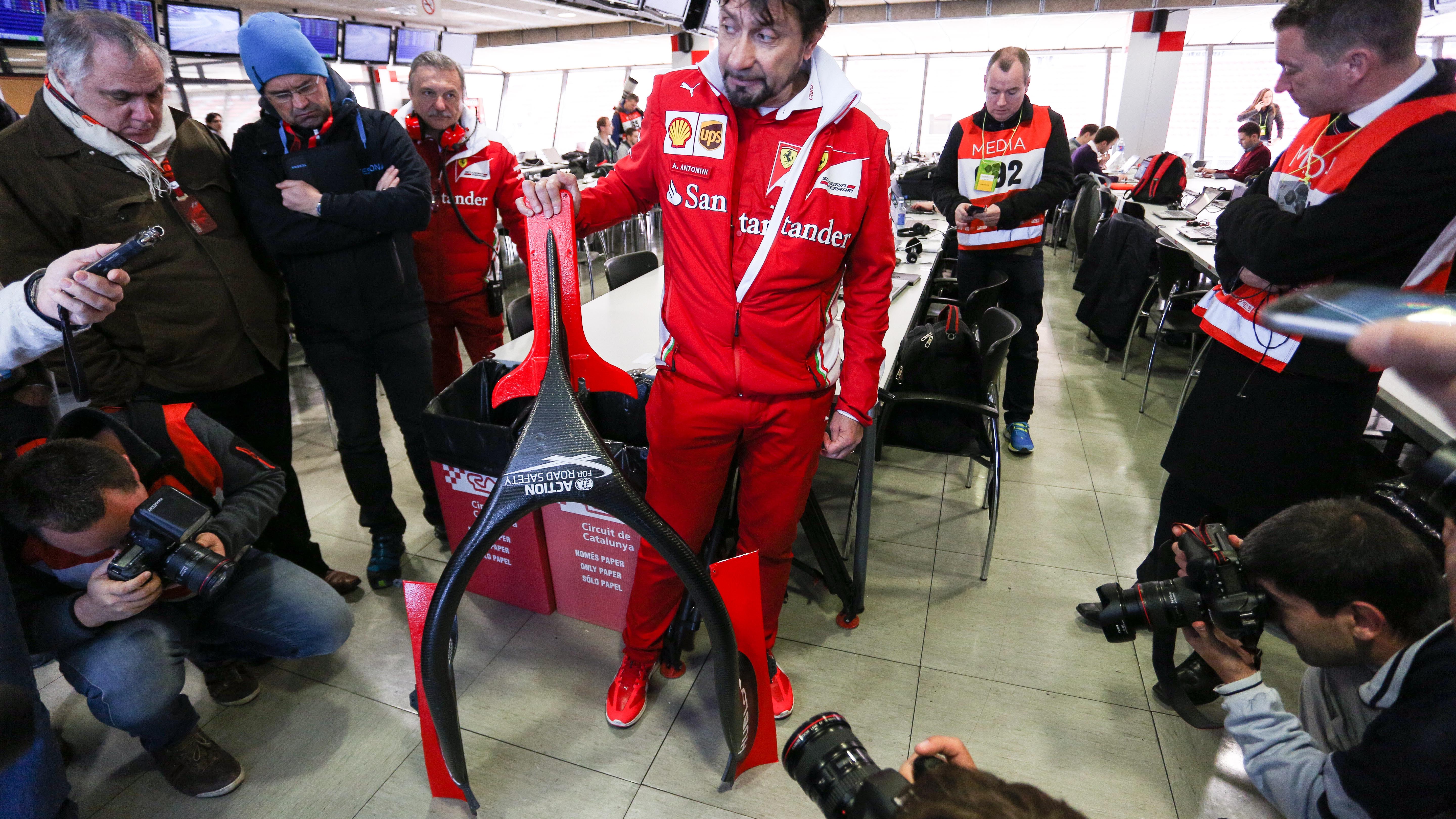
Video: Red Bull tests its windscreen for F1 cars
The four-time champions fire a wheel at their 'Aeroscreen' at 140mph
Two months on from the public debut of Ferrari’s ‘halo’ head protection design during pre-season testing in Barcelona, Red Bull have revealed their alternative ‘aeroscreen’ concept in the build-up to this weekend’s Russian Grand Prix in Sochi.
The shield – which has been developed in collaboration with the FIA – will be tested by Daniel Ricciardo during the first practice session at the Sochi Autodrom tomorrow. And you can see just how effective it ought to be in a crash in the video above.
Red Bull are working to ensure that their concept is just as effective as the halo when it comes to deflecting debris away from the cockpit area, and hope that it will prove more popular with fans.
The main criticism of the three-point halo idea (pictured below) was that it looked out of place on an F1 car.
Reigning world champion Lewis Hamilton went as far as saying that it was “the worst looking mod in Formula 1 history” in an Instagram post that was later deleted from his feed.
The sport has committed to adopting some form of external head protection on cars from the start of the 2017 season, and reports suggest that the aeroscreen performed well enough during impact tests to remain a contender for next year.
Race Director Charlie Whiting attended Red Bull’s garage fitting earlier today, and while he remains a supporter of the halo, he admits that it is “a matter of taste”.
Daniel Ricciardo meanwhile has asked fans to be “open” to change, and despite reacting positively at first viewing he says he is reserving judgement until he’s used the screen out on the track.
F1’s audience may well reject this solution as well, but the sport has realised that it can no longer delay a design change that might save lives in the future.
Top Gear
Newsletter
Thank you for subscribing to our newsletter. Look out for your regular round-up of news, reviews and offers in your inbox.
Get all the latest news, reviews and exclusives, direct to your inbox.
Marussia driver Jules Bianchi suffered from severe brain damage after colliding with a recovery vehicle during the Japanese Grand Prix in 2014, eventually succumbing to his injuries in July last year. It was the first fatality in F1 since Ayrton Senna was killed at Imola in 1994.
If either of the proposed devices helps save even one life over the next few decades, then it will be hard for anyone to argue in favour of maintaining the status quo.
[apester:572228824091eea4324e283d]
More from Top Gear
Trending this week
- Car Review
BMW iX3




